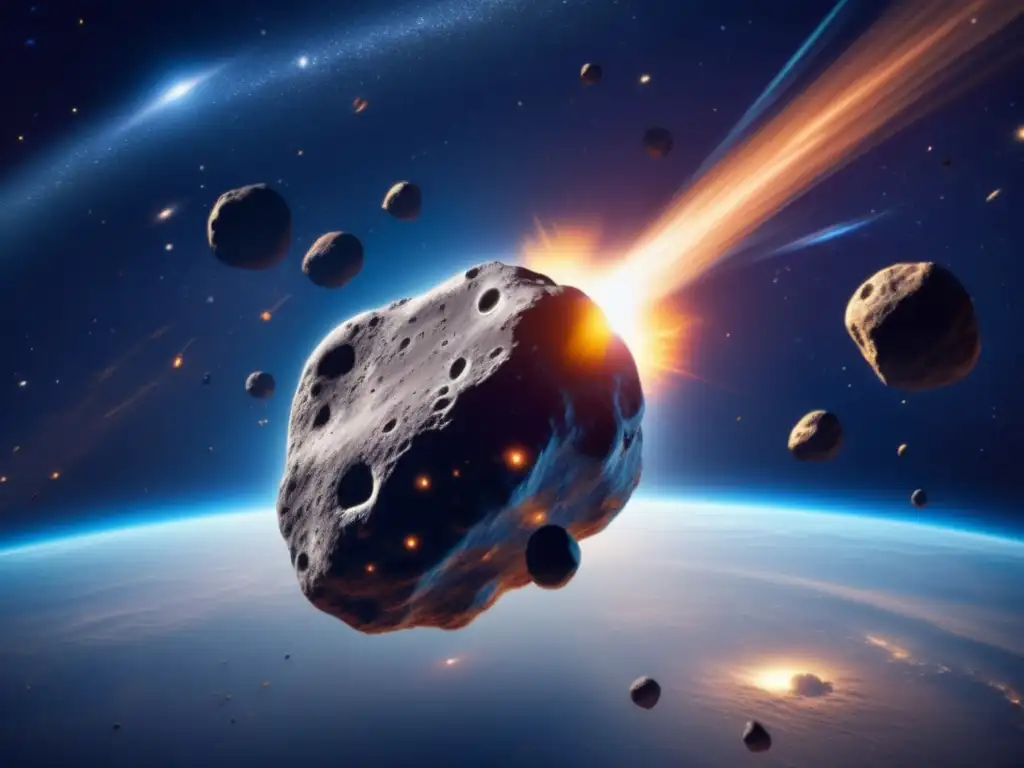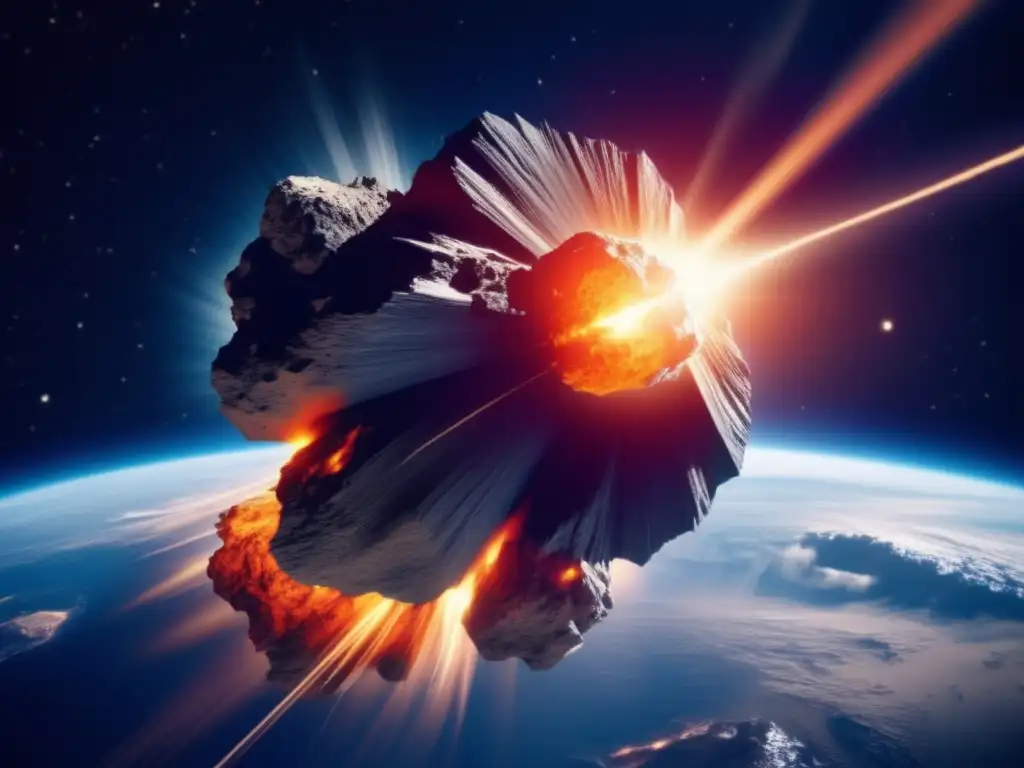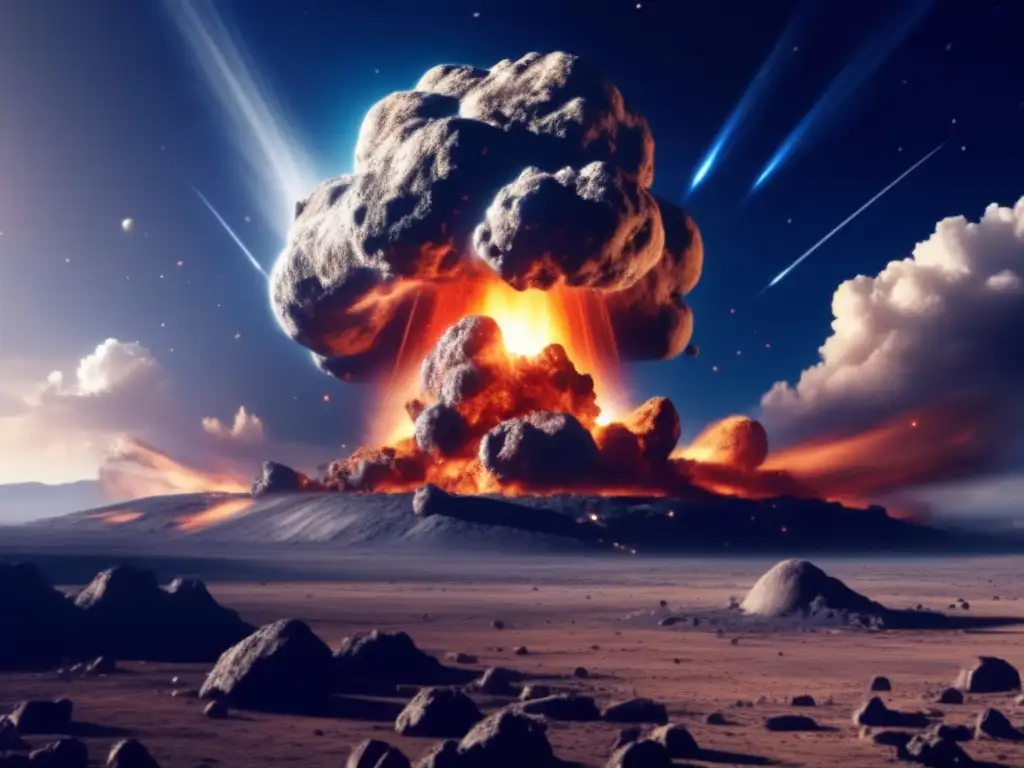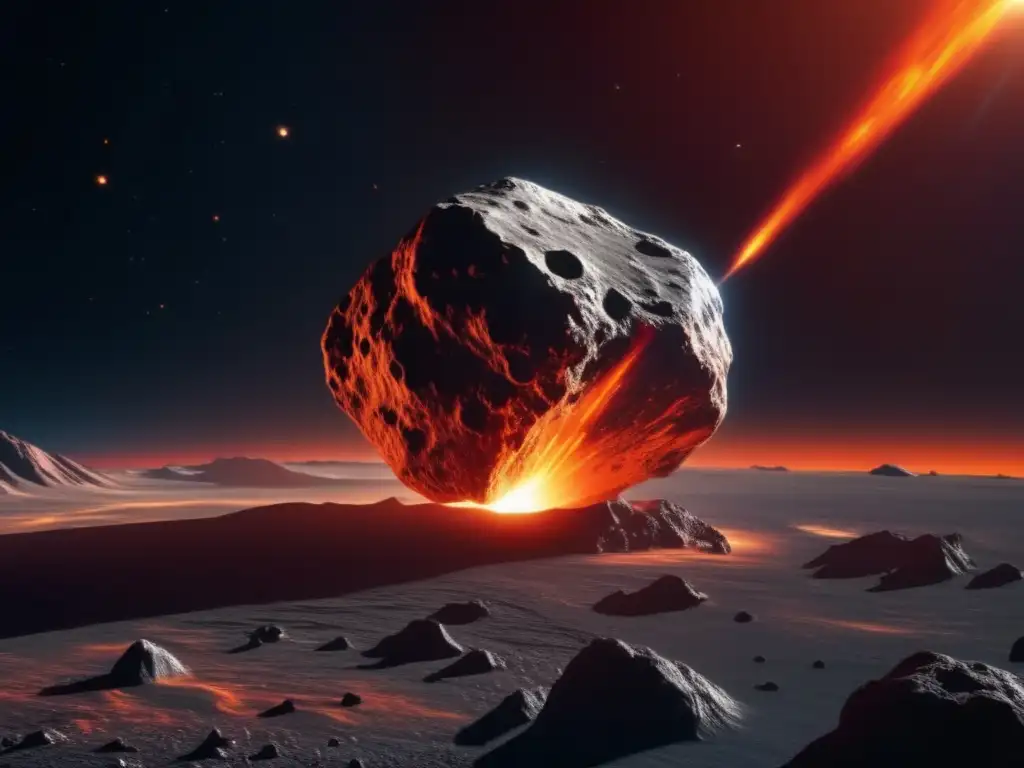Cosmic Bullets: The Speed And Force Of Asteroid Strikes

Introduction
Asteroids have been a fascinating topic of study for scientists around the world. These celestial objects are remnants of the early solar system, and their study provides insights into the formation and evolution of our planetary system. One of the most striking aspects of asteroids is the impact they can have on the Earth. Throughout history, asteroids have hit our planet, causing destruction and shaping its history. In this article, we explore the speed and force of asteroid strikes and their impact on our planet.
How Fast Do Asteroids Travel?

Speeds of Asteroids
Asteroids orbit the sun at different speeds depending on their distance from the sun and their size. Near-Earth asteroids (NEAs) are the most interesting for scientists studying asteroid impacts on Earth, as they have the potential to collide with our planet. NEAs typically travel at speeds between 20 km/s to 30 km/s, with some reaching speeds of up to 72 km/s. These velocities are much faster than the speed of sound, which travels at approximately 0.34 km/s. In comparison, the fastest aircraft flown by humans, the Lockheed SR-71 Blackbird, has a top speed of 3.5 km/s, which is less than 1/10th the speed of some NEAs.
Asteroid Impact Velocity on Earth
When an asteroid collides with the Earth, the impact velocity determines the amount of damage it can cause. Two factors affect the impact velocity: the velocity of the asteroid and the direction from which it hits the Earth. For example, an asteroid hitting the Earth at an angle will have a lower impact velocity than one hitting head-on. The impact velocity of the asteroid also has a significant effect on the size and power of the resulting crater.
The Chelyabinsk Meteor
The Chelyabinsk meteor, which exploded over Russia in 2013 with the force of 500,000 tons of TNT, is an example of how fast asteroids can travel. The meteor was estimated to be about 20 meters in diameter and entered the Earth's atmosphere at a speed of approximately 40,000 mi/h (64,400 km/h) before exploding roughly 18 miles (29 kilometers) above Chelyabinsk Oblast, Russia. The blast wave from the explosion damaged thousands of buildings and injured over 1,000 people.
What Is the Force of an Asteroid Strike?

Kinetic Energy of Asteroids
Asteroids are objects with a significant amount of kinetic energy due to their high velocities. When an asteroid collides with the Earth, this kinetic energy is converted into other forms of energy, including heat, sound, and shock waves. The force of an asteroid impact depends on various factors, including the size, density, and velocity of the asteroid, as well as the angle and location of impact.
The Tunguska Event
The Tunguska event, which occurred in Russia in 1908, is an example of the force of an asteroid strike. The asteroid was estimated to be between 60 and 190 meters in size and exploded about 6-10 kilometers above the ground with the force of 10-15 megatons of TNT. The explosion flattened trees across more than 2,000 square kilometers and generated a shockwave that was felt as far as 1,000 kilometers away. The impact's force was equivalent to that of a small nuclear bomb, highlighting the power of asteroids.
Craters on Earth from Asteroid Strikes
One visible effect of asteroid strikes is the formation of craters on Earth's surface. The size and shape of the craters depend on the size and force of the impact and the composition of the Earth's surface. The largest known impact crater on Earth is the Vredefort crater in South Africa, which measures approximately 250 kilometers in diameter and was formed by an asteroid strike about 2 billion years ago. Other notable craters include the Chicxulub crater in Mexico, which is believed to be the site of the asteroid strike that led to the extinction of the dinosaurs, and Meteor Crater in Arizona, which is a popular tourist destination.
What Happens When an Asteroid Strikes Earth?

The Impact of Asteroids on Climate
Asteroid strikes have had significant impacts on the Earth's climate in the past. For example, the dinosaur extinction is thought to have been triggered by an asteroid strike, leading to a period of cold and darkness that made it difficult for many species to survive. In addition, smaller asteroid strikes can also cause changes in the environment, such as the release of dust and debris into the atmosphere, which can block sunlight and reduce temperatures.
Effects of Asteroids on Life
Asteroid strikes can have devastating effects on life on Earth. Depending on the size and force of the impact, entire species can be wiped out, and ecosystems can be destroyed. In addition, the shock waves and heat generated by large impacts can cause widespread fires, further damaging the environment.
The Importance of Studying Asteroid Impacts
Studying asteroid impacts is crucial for understanding the history and evolution of our planet. By studying the craters left behind by asteroid strikes, scientists can learn more about the composition and structure of the Earth's surface. In addition, understanding how asteroids impact the Earth can help in developing strategies for protecting our planet from future impacts.
Frequently Asked Questions

-
How fast do asteroids travel?
Asteroids can travel at speeds between 20 km/s to 30 km/s, with some reaching speeds of up to 72 km/s.
-
What is the force of an asteroid strike?
The force of an asteroid strike depends on various factors, including the size, density, and velocity of the asteroid, as well as the angle and location of impact.
-
What is the largest known impact crater on Earth?
The largest known impact crater on Earth is the Vredefort crater in South Africa, which measures approximately 250 kilometers in diameter.
-
What happens when an asteroid strikes Earth?
An asteroid strike can have devastating effects on life on Earth, including wiping out entire species and damaging ecosystems.
-
Why is studying asteroid impacts important?
Studying asteroid impacts is crucial for understanding the history and evolution of our planet and developing strategies for protecting our planet from future impacts.
Conclusion
Asteroids can travel at incredible speeds and have the potential to cause significant damage to our planet. The force of an asteroid strike depends on various factors, including the size, density, and velocity of the asteroid, as well as the angle and location of impact. Studying asteroid impacts is essential for understanding the history and evolution of our planet and developing strategies for protecting our planet from future impacts. With continued research, we can better understand these cosmic bullets and their impact on our world.
Additional Resources

For more information on asteroids and their impact on Earth, check out the following resources:
 The Tunguska Event: A Modern Asteroid Mystery
The Tunguska Event: A Modern Asteroid Mystery The Barringer Crater: Evidence Of An Ancient Collision
The Barringer Crater: Evidence Of An Ancient Collision When The Heavens Strike: The Influence Of Asteroids On Earth
When The Heavens Strike: The Influence Of Asteroids On EarthIf you want to discover more articles similar to Cosmic Bullets: The Speed And Force Of Asteroid Strikes, you can visit the Asteroid Impacts category.
Leave a Reply

Articulos relacionados: